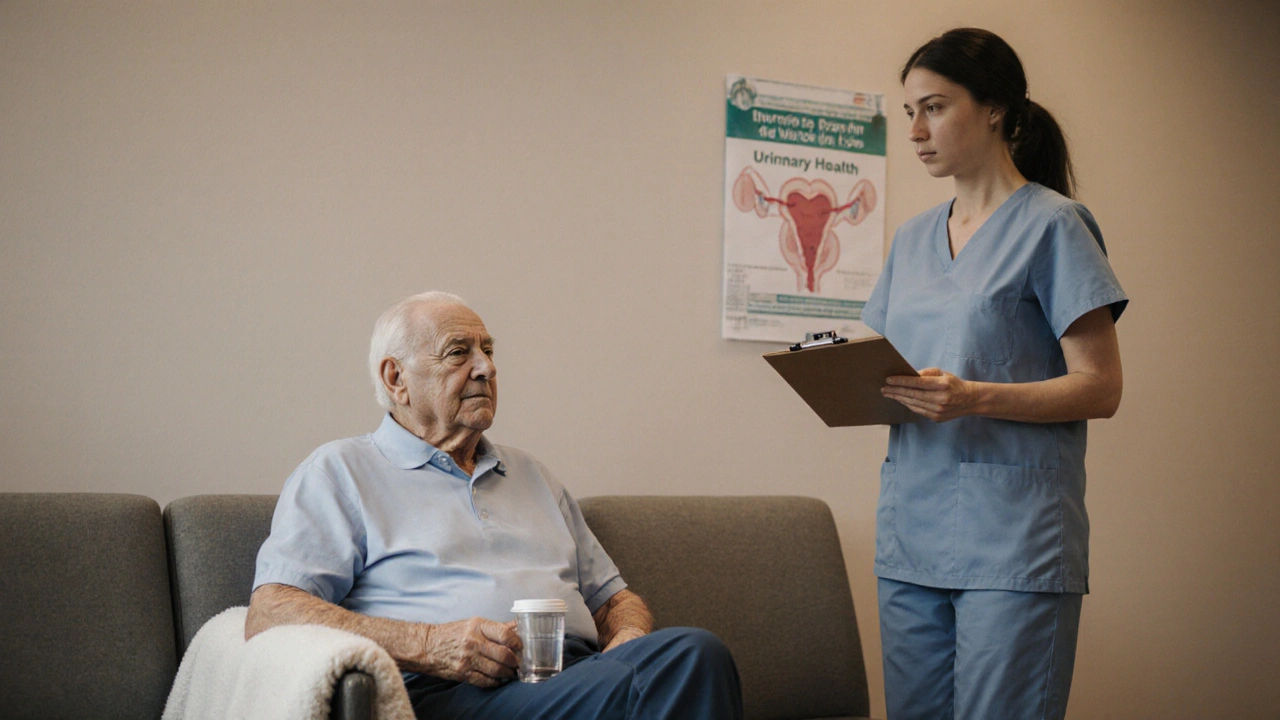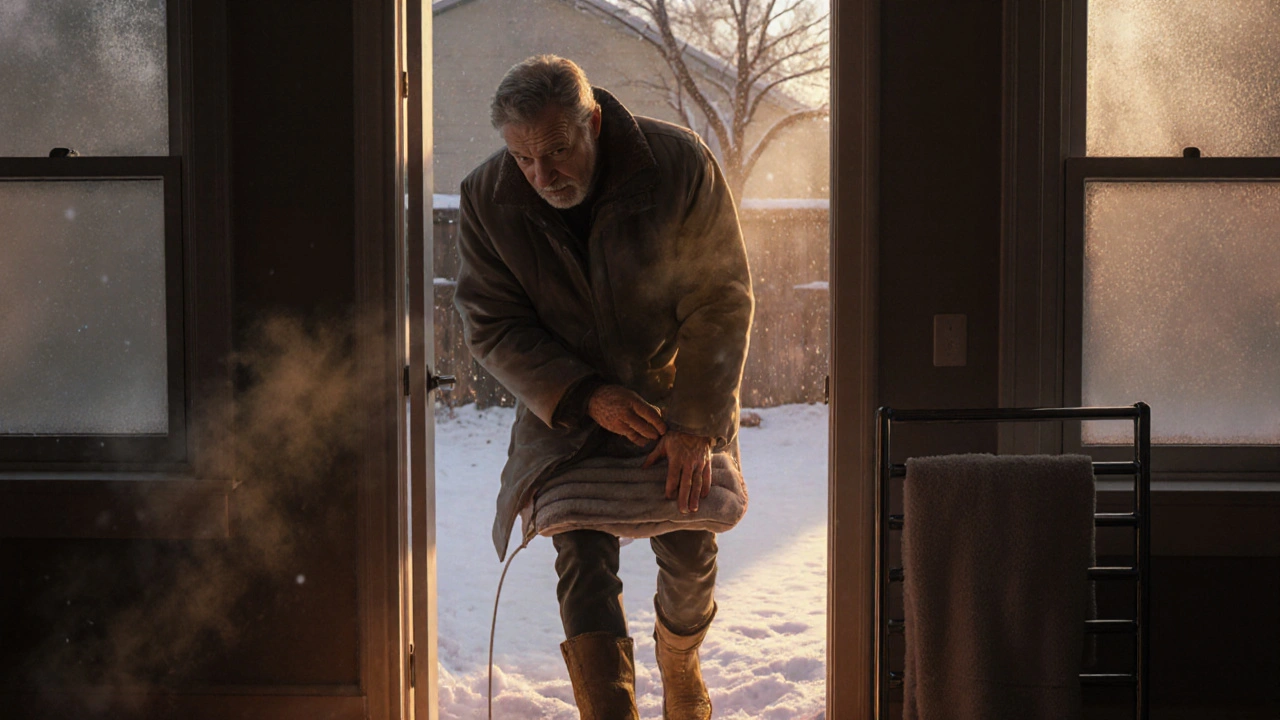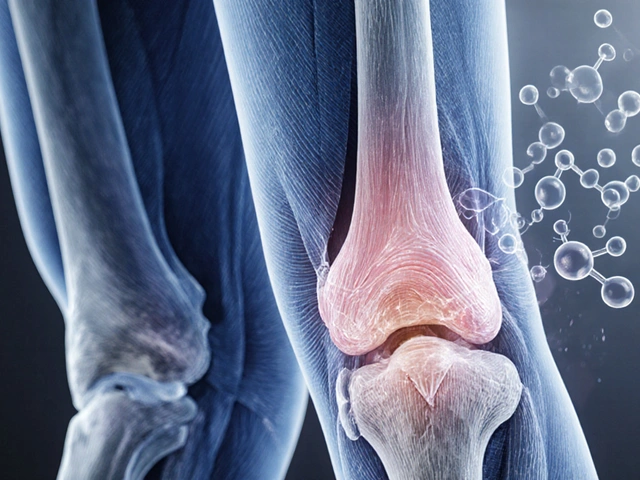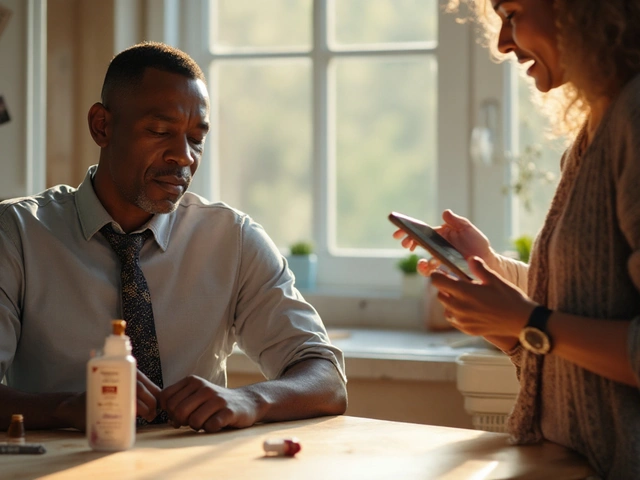Quick Takeaways
- Dress the lower body warmly before you even think about using the restroom.
- Warm up the bladder with a heating pad or warm water bottle for a few minutes.
- Stay hydrated with warm drinks, but avoid excessive caffeine right before bedtime.
- Gentle pelvic exercises can help the urethra relax in chilly conditions.
- See a doctor if you notice pain, blood, or the problem persists for more than a week.
When Difficulty urinating in cold weather is a condition where the muscles of the bladder and urethra contract tighter than usual due to low ambient temperature, it can feel like your body is putting a lock on the bathroom door. The problem isn’t just uncomfortable-it can lead to urinary retention, infections, or even kidney issues if ignored.
Below you’ll find a step‑by‑step guide that tackles the root causes, offers practical warming tricks, and outlines when professional help is the right move.
Why the Cold Makes the Bladder Stubborn
The bladder a muscular sac that stores urine until you’re ready to release it is highly sensitive to temperature changes. When the skin cools, the body’s thermoregulation the process that keeps core temperature stable kicks in, diverting blood flow away from peripheral areas-including the pelvic region. Less blood means the bladder wall gets colder, and the smooth muscle (detrusor) becomes less responsive.
At the same time, the urethra the tube that carries urine out of the body tightens to preserve heat, creating extra resistance for urine to pass. This double‑lock can leave you straining for a few extra minutes, or worse, feeling like you can’t go at all.
Hydration: Warm Liquids Over Cold Drinks
Staying hydrated is a cornerstone of any urinary health plan, but in winter the temperature of the fluid matters. Warm beverages-herbal tea, warm water with lemon, or low‑caffeine black tea-raise core temperature from the inside, helping the bladder stay supple. Cold sodas or iced coffee, on the other hand, cool the pelvic region further and can aggravate the problem.
Aim for at least 1.5 to 2 liters of hydration the intake of fluids needed to keep blood volume and urine production normal each day. Split the intake into small, warm drinks throughout the day rather than gulping large amounts at once.
Dress for Success: Warm Clothing That Targets the Pelvis
Thermal underwear isn’t just for staying cozy on the slopes-it’s a proven way to keep the lower abdomen and groin warm. Look for fabrics with moisture‑wicking properties (like merino wool) that trap heat without trapping sweat.
Key pieces include:
- A snug thermal leggings tight‑fitting insulated pants that hold heat around the hips and thighs.
- A soft, fleece‑lined undershirt layer that shields the lower belly under regular clothing.
- Optional heated seat pads electrically warmed cushions for chairs and toilets if you spend a lot of time sitting outdoors.
These layers act like a blanket for the bladder, reducing the sudden temperature drop that triggers muscle tightening.
External Heat Sources: Quick Warm‑Up Techniques
If you’re already at the bathroom and feel the “lock,” a few minutes of external heat can do the trick. Here are three easy methods:
- Place a heating pad an electric or microwavable pad that delivers gentle warmth over the lower abdomen for 2‑3 minutes.
- Fill a small waterproof bag with warm (not boiling) water, wrap it in a towel, and press it against the pelvic area.
- Run warm water over the perineum for 30 seconds before attempting to void.
Always test the temperature first to avoid burns.

Pelvic Floor Exercises: Loosen the Urethra
Gentle “reverse Kegel” exercises-where you relax and gently push the pelvic floor outward-can help the urethra open wider. Do this while seated and breathing deeply. A simple routine:
- Inhale, feel the pelvic floor spread.
- Exhale, hold the relaxed state for 5 seconds.
- Repeat 8‑10 times before you try to go.
This technique reduces the involuntary tightening caused by cold‑induced stress.
When Medicine Helps: Alpha‑Blockers and Other Options
If lifestyle tweaks aren’t enough, a doctor may prescribe an alpha‑blocker medication a drug that relaxes smooth muscle in the bladder neck and urethra. These are commonly used for benign prostatic hyperplasia (BPH) but can aid anyone with chronic cold‑induced urinary resistance.
Typical doses start low (e.g., 0.4mg tamsulosin daily) and are adjusted based on response. Side effects may include dizziness or a slight drop in blood pressure, so discuss any heart conditions with your physician.
Comparison of Common Warm‑Up Strategies
| Method | Speed of Relief | Equipment Needed | Best For | Potential Drawbacks |
|---|---|---|---|---|
| Heating Pad | 1‑3minutes | Electric or microwavable pad | Indoor use, quick fix | Requires power source, risk of overheating |
| Warm Water Bottle | 2‑4minutes | Reusable bottle, hot water | Portable, no electricity | Water may cool quickly |
| Warm Drink + Thermal Wear | 5‑10minutes (systemic) | Thermal clothing, kettle | Overall comfort, long‑term | Requires preparation time |
| Alpha‑Blocker Medication | Hours to days (once steady state reached) | Prescription | Frequent or severe cases | Side effects, need doctor approval |
Red Flags: When to Call a Healthcare Professional
Most cold‑weather bladder issues resolve with the tricks above, but watch out for these warning signs:
- Sharp pain or burning during urination.
- Blood in urine.
- Inability to pass any urine for more than 6hours.
- Repeated urinary tract infections (UTIs) during winter months.
- Fever, chills, or lower back pain.
If any of these appear, seek medical attention promptly. Early treatment can prevent complications like kidney damage.
Putting It All Together: A Sample Winter Routine
- Morning: Drink a cup of warm ginger tea while wearing thermal leggings.
- Before heading out: Slip on a fleece‑lined undershirt and snug underpants.
- At work: Keep a small heating pad in your desk drawer; activate it for 2minutes before any bathroom break.
- Evening: Do a quick reverse Kegel routine, then run warm water over the perineum for 30seconds.
- Night: If you feel the urge, place a warm water bottle on your lower abdomen for a few minutes before trying to void.
Following a consistent pattern trains your body to stay warm where it counts, reducing the frequency of those frustrating “I can’t go” moments.

Frequently Asked Questions
Why does my bladder feel tighter when it’s cold outside?
Cold causes blood vessels in the pelvic area to contract, cooling the bladder wall and making the detrusor muscle less responsive. The urethra also tightens to preserve core heat, creating extra resistance to urine flow.
Can drinking hot coffee help?
Coffee is warm, but its caffeine can stimulate the bladder and increase urgency, sometimes worsening the problem. A warm, low‑caffeine beverage is a better choice.
Are heating pads safe for daily use?
Yes, as long as you follow the manufacturer’s temperature settings and never leave them on unattended. Keep the pad on a low‑heat setting and limit use to 10‑15minutes at a time.
When should I consider medication?
If lifestyle changes haven’t improved your symptoms after a week or two, or if you experience pain, blood, or frequent UTIs, talk to a doctor. An alpha‑blocker may be prescribed after a proper evaluation.
Do pelvic floor exercises actually work?
Yes. Relaxation‑focused pelvic exercises train the muscles to release rather than contract under cold stress, which can ease the flow of urine.






Written by Martha Elena
I'm a pharmaceutical research writer focused on drug safety and pharmacology. I support formulary and pharmacovigilance teams with literature reviews and real‑world evidence analyses. In my off-hours, I write evidence-based articles on medication use, disease management, and dietary supplements. My goal is to turn complex research into clear, practical insights for everyday readers.
All posts: Martha Elena